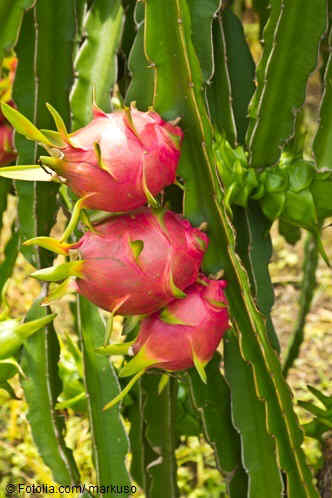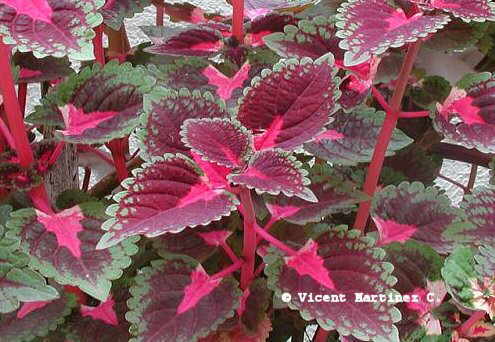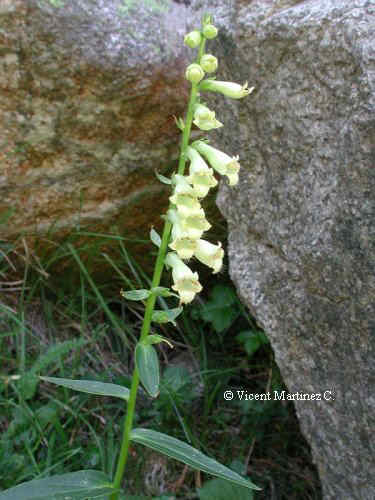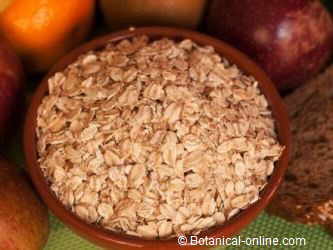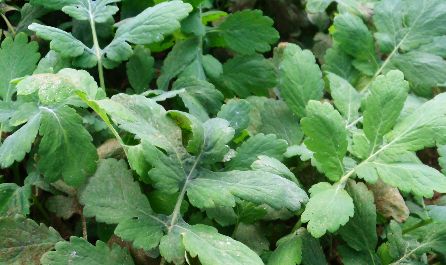Contents
HOW TO GROW PITAHAYAS
 Plant characteristics
Plant characteristics
– Stems are succulent, triangular and wavy, with highly branched margins.
– Adventitious roots on the stem, allowing to fix the whole plant to its support. It is not a parasitic plant, since only uses a support to become erect. The underground creeping stems develop roots as a terrestrial plant.
– White or pink flowers large, bell-shaped, tubular, hermaphrodite .
– The plant blooms at night. The flowers are showy and have a very fragrant smell, but the next day they fade.
– The fruit is a fleshy, ovoid, rounded and elongated berry, red skin color, purple or yellow, and characterized by the presence of leafy bracts or scales on the surface.
The fruit pulp can be white, red, pink or yellow, with numerous tiny black seeds. It weighs between 200g. and 1kg, having a sweet, slightly sour taste. Some varieties are a little insipid.
Dragon fruit or pitaya (Hylocereus undatus) is a vine plant family Cactaceae. |
 Weather requirements for dragon fruit
Weather requirements for dragon fruit
– American tropical and subtropical plant, naturalized in other regions such as Vietnam and Thailand.
– It grows in full sun. In very hot places, it is preferable to place it in semi-shade. In nature, these plants grow under the canopy of trees.
– It can be cultivated from sea leavel 2,000m.
– Annual rainfall: 800 to 1,500mm. It is a cactus plant that can produce quantity of fruits with low water requirements.
– Temperature 18 to 26 ° C. Higher temperatures than 38ºC can damage it.
– Drought resistant and sensitive to cold.
– Sensitive to freezing temperatures, which produces tissue damage and affect fruit production, although it can recover.
– Sulfurous gas resistant plant, which grows well in volcanic areas.
 Dragon fruit soil
Dragon fruit soil
– Deep and well drained soils. Rich in organic matter.
– Types of soil: average or loamy – sandy. It tolerates rocky terrain.
– Soil pH from 5 to 8.5
DRAGON FRUIT REPRODUCTION
![]() Dragon fruit can be reproduced by seeds or vegetatively. Normally the vegetative form are used because they grow faster and easier.
Dragon fruit can be reproduced by seeds or vegetatively. Normally the vegetative form are used because they grow faster and easier.
Vegetative reproduction of dragon fruit
If you take a branch of a mature plant and replant it, you will obtain a biologically identical plant to the mother plant, so you must choose a strong, healthy, productive plant. It has not to be damaged or show any spots nor deformations.
– The branches of cacti produce new buds or flowers from a bud or areola. The areolas are meristematic tissues (tissues of plant growth) capable of producing new shoots of the plant. That is, these parts of the plant have all information to produce a new sample.
– After harvesting, a developed medium-large size young plant is selected, aged between 1-2 years.
– With the help of a sharp, clean knife, cut the part of the plant from its attachment point, trying to make a cut as small as possible to prevent possible infections. Cuttings should be about 20cm long.
– Place the cuttings in a shady place for 10 days or 2 weeks in a sand substrate, until the cut has healed.
– Rooting hormone treatment is not necessary, because the stem will easily produce roots in 35 to 40 days.
– Transplantation in final place is done in late spring, when there is no risk of frost and the rainy season is over. It is recommended the soil to have been prepared two months before transplanting, well removed and fertilized.
– Bury half or two thirds of the cuttings in the ground, with the cut down. Press the soil around the cutting. If buried less than half, the cutting will possibly be bent by the wind or it will produce too shallow roots. If buried more than two thirds, its growth will be limited, since it will have little free surface for photosynthesis.
– Plant at a distance of 1 or to 2 meters from the support.
Sexual reproduction of the dragon fruit
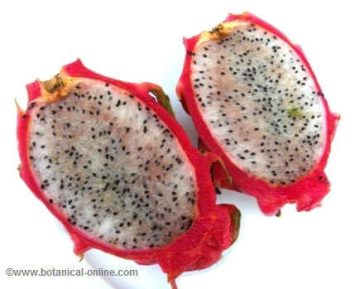
Dragon fruit open transversely. Seeds can be observed.
Reproduction by seed is a slow and difficult method, which usually takes much longer than vegetative reproduction. It is generally only used to create hybrids.
– Clear the seeds from the fruit pulp.
– Seeds should be thoroughly cleaned and dried with a paper towel to withdraw moisture. If they were wet, they would be more susceptible to diseases and they possibly will not germinate.
– Wait 28 days before planting.
– Plant the seeds in a seedbed. The soil must be rich in organic matter. Fit the seeds securely to the ground.
– Spray with water every day to maintain a minimum level of moisture and keep warm temperatures.
 Work to do
Work to do
– From March to August the plants will grow. They have to be watered every 3-4 days to maintain a constant humidity, especially during the formation of the fruits.
– Apply fertilizer periodically.
– In autumn, limit irrigation to prevent frost damage.
 Dragon fruit harvest
Dragon fruit harvest
– Harvest takes place between June and September.
– The fruits are picked when they reach physiological maturity, because it is a non-climacteric fruit (it does not become ripe out of the tree).
 Dragon fruit plagues and diseases
Dragon fruit plagues and diseases
Currently, there in not much study on pests and diseases of this crop. There is little literature on the subject. We have to take into account:
– Fruit predators: mainly birds.
– Pest by aphids (Pentalonia nigronervosa), cochineal (Pseducoccus brevipes) and ants (Solenopsis geminata, Iriidomyrmex humilis, Pheidole megacephala).
– Root rot: if over-watering and in wet places (Fusarium spp, alternate spp..).
– Attacks by fungi: characterized by brown spots on the fruit.
![]() More information on dragon fruit.
More information on dragon fruit.

